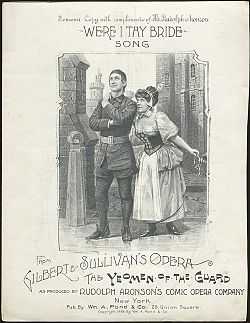Casino Theatre (New York City)


The Casino Theatre was a Broadway theatre located at 1404 Broadway, at West 39th Street in New York City. Built in 1882, it was a leading presenter of plays and musicals until it closed in 1930.[1] The Casino Theatre was designed in Moorish Revival style by architect Francis Hatch Kimball and was the first theatre in New York to be lit entirely by electricity. It originally seated approximately 875 people, however the theatre was enlarged and rebuilt in 1905 after a fire in 1903. The redesigned Casino seated 1,300.[2]
The theatre opened with productions by the McCaull Comic Opera Company. It was managed by Canary & Lederer from 1894 to 1903, and from 1903 by the Shuberts. The theatre was home to a number of long-running comic operas, operettas and musical comedies. As the center of the Broadway theatre district moved uptown, north of 42nd Street, the Casino closed in 1930. It was demolished the same year, along with the nearby Knickerbocker Theatre, to make way for the expanding Garment District.[3]
The Casino hosted a series of successful operettas and other musical theatre pieces in the 1880s and 1890s. It is perhaps best remembered, however, as having been the home of the 1900 production of the Edwardian musical comedy, Florodora. In that show, it became the first theatre in New York to feature a chorus line, the "Florodora Sextet". The sextet's original lineup included a number of ladies who would later achieve fame and fortune, most notably Evelyn Nesbit.[2] The theatre continued to host musicals and operettas until World War I, when it hosted transfers of several of the Princess Theatre musicals. In the 1920s, the theatre again hosted such successful operettas as The Vagabond King and The Desert Song.
Notable productions
- 1882: The Queen's Lace Handkerchief
- 1883: The Beggar Student
- 1884: Nell Gwynne
- 1885: Die Fledermaus
- 1886: Erminie
- 1888: The Yeomen of the Guard
- 1894: The Passing Show
- 1895: The Wizard of the Nile
- 1896: In Gay New York
- 1897: The Belle of New York
- 1898: Clorindy, or The Origin of the Cake Walk
- 1900: The Casino Girl
- 1900: Florodora
- 1901: The Little Duchess
- 1902: A Chinese Honeymoon
- 1903: The Runaways
- 1905: The Earl and the Girl
- 1909: Havana
- 1909: The Chocolate Soldier
- 1912: The Firefly
- 1912–13: Seasons of Gilbert and Sullivan
- 1914: High Jinks (musical)
- 1915: The Blue Paradise
- 1916: Very Good Eddie
- 1917: Oh, Boy!
- 1918: Oh, Lady! Lady!!
- 1921: Tangerine
- 1923: Wildflower
- 1923: A Chinese Honeymoon
- 1924: I'll Say She Is – Marx Brothers
- 1925: The Vagabond King
- 1926: The Desert Song
- 1928: My Maryland
- 1929: The New Moon
- 1930: American Opera Company's Madama Butterfly
References
- ↑ "Casino Theatre (Built: 1882 Demolished: 1930 Closed: 1930)" Internet Broadway Database (Retrieved on December 31, 2007)
- ↑ 2.0 2.1 Casino Theatre. World Theatres – Broadway and Off Broadway Theatres, accessed May 24, 2011
- ↑ "Broadway and Off Broadway Theatres – A to L". World Theatres. Retrieved 24 May 2011.
Coordinates: 40°45′13″N 73°59′14″W / 40.75362°N 73.9871°W